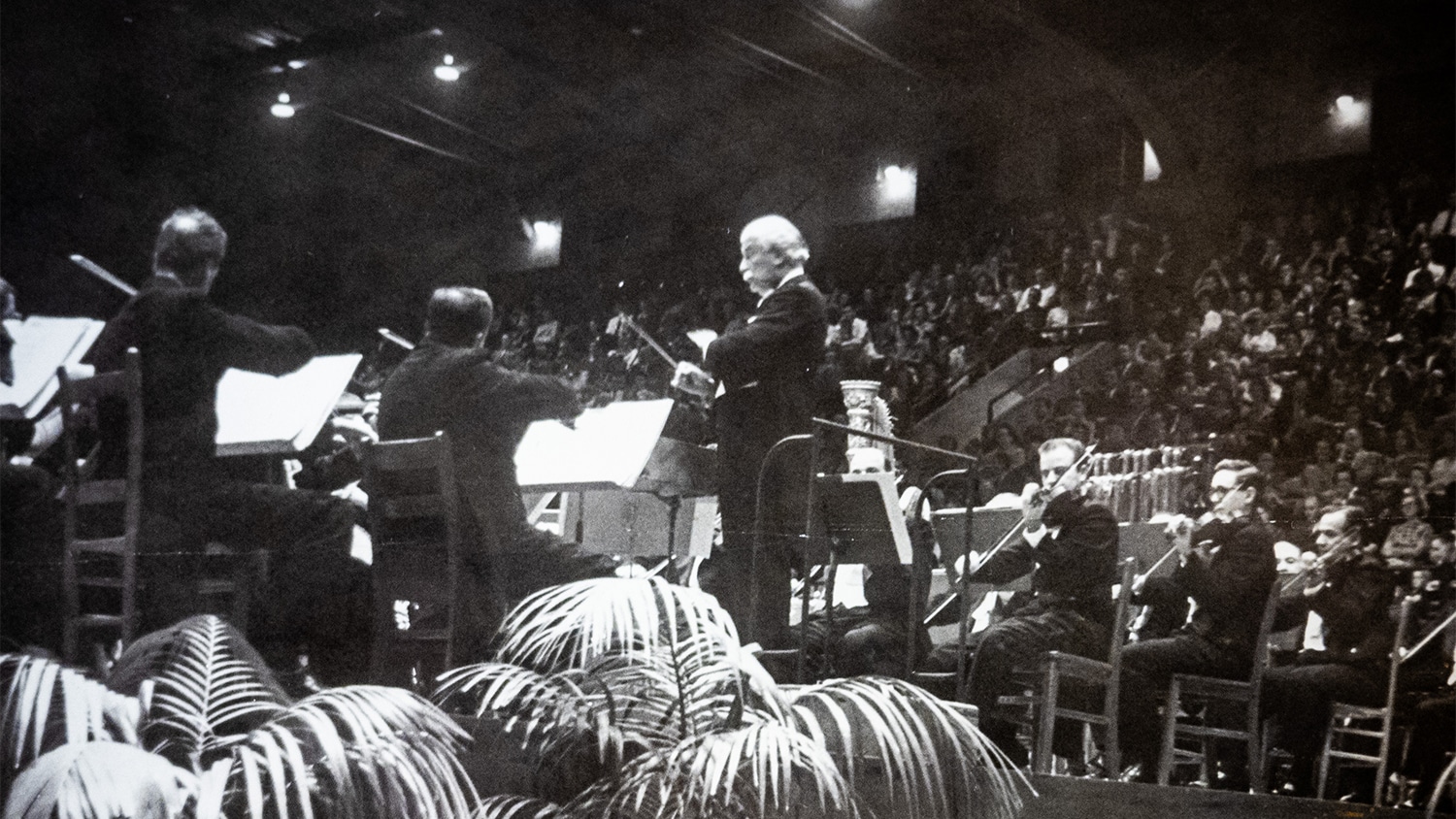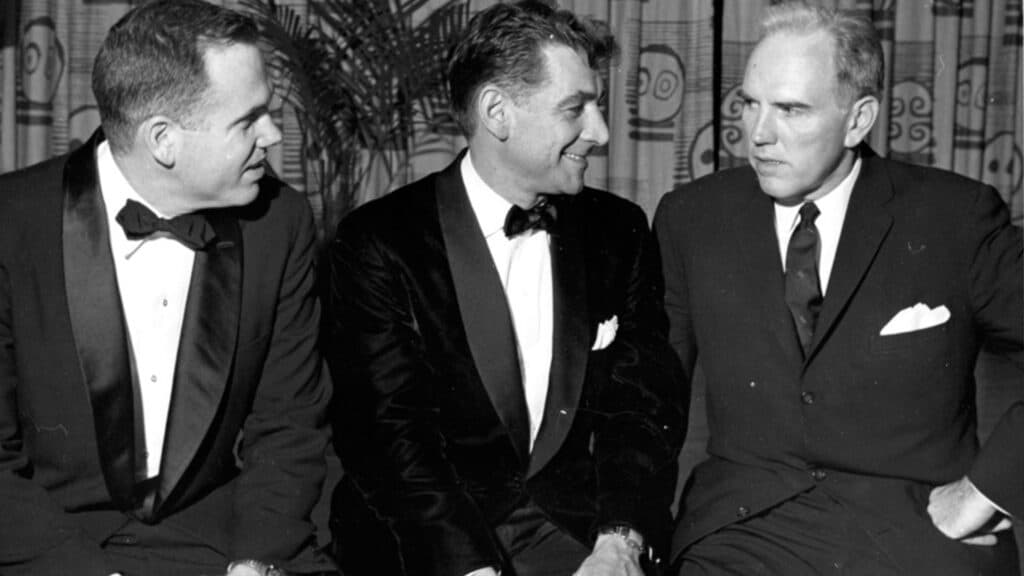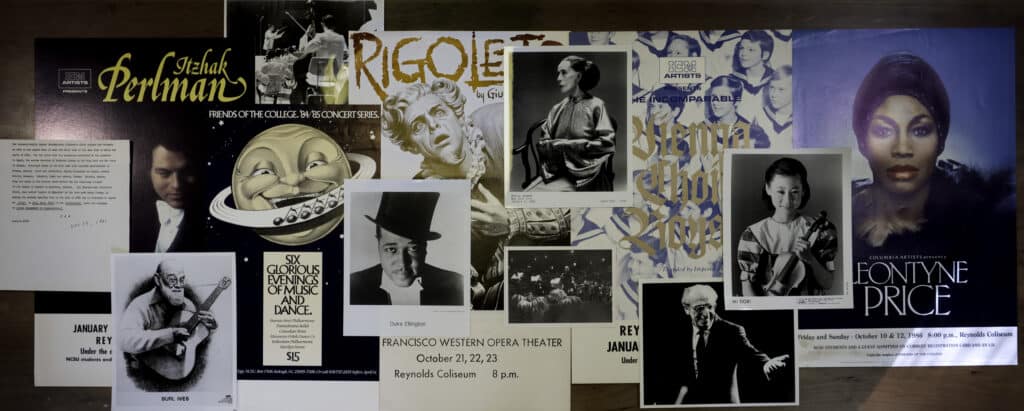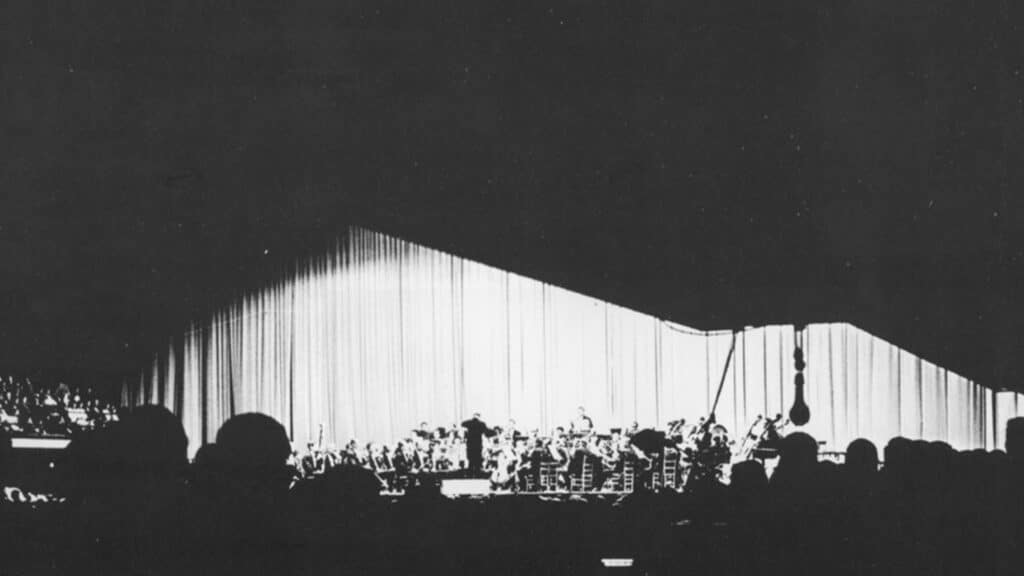High-Class Entertainment With Friends
For 34 seasons, NC State’s groundbreaking Friends of the College series brought international performances to Reynolds Coliseum.

David Thompson, Michael Jordan and Oscar Robertson. Bob Dylan, Elton John and Linda Ronstadt. John F. Kennedy, Ronald Reagan and Barack Obama.
They all had their moments in the spotlight on the floor of Reynolds Coliseum but, arguably, they stood in the shadow of America’s greatest conductor, New York City Symphony Orchestra’s Leonard Bernstein, as the most notable performer in the 75-year history of Reynolds Coliseum.
Bernstein appeared regularly at Reynolds during the 1960s as part of NC State’s unique and groundbreaking Friends of the College series that for 34 years brought internationally important programs of classical music, ballet and folk culture to the heart of Raleigh as part of a low-priced subscription series.
“Its aim was to upgrade the cultural climate of the area by bringing to the college campus musical and dramatic artists of top-notch caliber,” said its promotional material, which included brochures, posters and publicity photos, most of which are now preserved in the NC State Libraries’ Special Collections Research Center.

Beginning with a modest budget of $11,000 in the fall of 1959, the five- to seven-event series was the brainchild of NC State Student Union director Gerald Erdahl and the lasting legacy of successors Henry Bowers and Banks Talley Jr., both of whom led the university’s student union and student actives on campus.
“The idea behind it was to bring the very best performances we could for the lowest cost we could,” the late Bowers said in a 2014 interview. “And it was good for the reputation of State College at the time.”
With more than 700 volunteers selling subscription-only memberships in 200 communities across North Carolina, the FOTC series often sold well over 20,000 season tickets, at times more than either football or basketball combined, always with the familiar tagline “under the auspices of the Friends of the College.” There were no reserved seats or single-night sales, just as there was no air-conditioning.
The idea behind it was to get the very best performances at the very lowest cost. We also thought it was important for engineering and agricultural students to learn more about the arts.
Acclaimed pianist Van Cliburn drew the largest single crowds during his three FOTC appearances, as many as 19,000 spectators during one show. The smallest crowd was on March 1, 1980, when an operatic quartet from New York went forward with their performances despite four inches of snow and ice on Raleigh roads. Only 35 subscribers managed to make it through the doors.
For a school with no fine-arts program, serving mostly engineers and prospective farmers from North Carolina’s most rural counties, international performances of “Swan Lake,” “La Traviata” and the Royal Marines Tattoo seemed almost out of place, especially at an acoustically challenged mega-venue located next to timpani-trembling railroad tracks.
Yet throughout its lifetime, the FOTC series showed that Beethoven and basketball, volleyball and Vivaldi, wrestling and Rossini and gymnastics and James Galway could coexist on a hardwood floor and temporary stage.

Its success surprised everyone — from the international booking agents based in New York to the academic snobs at southern rivals — that the Old North State’s first land-grant college produced so many elaborate on-stage productions.
“My god,” said Pulitzer Prize-winning playwright Paul Green, founder of the North Carolina Symphony, “NC State is the cultural center of the university system.”
There were no similar programs at schools in the state and few like it across the nation. It was championed not only by NC State icons like Erdahl, Bowers and Talley, but also by local literary critic and journalist Sam Ragan, Raleigh lawyer William Joslin, dean of NC State’s School of Design Henry Kamphoefner and Chancellor John Caldwell.
The low-cost concept was an outreach to the community. Subscriptions began at $4 for four concerts at its inception and never rose above $30 until its financially strapped final year. Students and one guest were admitted to every show without cost because the FOTC received $8,000 per year in student fees to help fund the unique programming.



“The idea behind it,” Bowers said, “was to get the very best performances at the very lowest cost. We also thought it was important for engineering and agricultural students to learn more about the arts.
“The students responded to it, and the community responded to it.”
Global orchestras always began their shows with “The Star-Spangled Banner” and the national anthem of their home country, which was only a problem when the British symphonies played “God Save the Queen” and the American audiences sang “My Country, ‘Tis of Thee.”
Organizing such shows was difficult, especially when dealing with literal prima donnas used to getting special treatment in New York, Washington and Atlanta. In Raleigh, they were housed at either the downtown Sir Walter Hotel or the Velvet Cloak Inn on Hillsborough Street and dined at private homes and with an occasional visit to the governor’s mansion.
The performers loved being in cavernous Reynolds Coliseum, which could seat 12,400 for basketball but nearly 19,000 for inaugural Tchaikovsky Competition-winning pianist Van Cliburn. They made sure to take pictures of the audience from the stage.
The success of the series eventually brought about its demise. The slatted seats in Reynolds were fine for the up-and-down crowds of athletic events, but they were a little too hard for tuxedoed tushies. The lack of air conditioning did no favors to sequined gowns. And the scheduling in the multipurpose facility finally became a problem that no one wanted to overcome.
“This is my classroom,” Hall of Fame basketball coach and one-time athletics director Jim Valvano told Bowers in a meeting. “You can’t take a professor out of his classroom.”
As booking fees soared, the FOTC could not keep up with costs, which began to include parking and other services. In 1994, there were only two performances and series tickets were $35.
“It just wasn’t sustainable, for a lot of reasons,” Bowers said. “Audiences became more sophisticated and wanted reserved seats. Booking fees became too high. It became too expensive to do this thing.”
The last performance of the FOTC was 30 years ago on April 24, 1994, by the Staatskapelle Dresden orchestra, with conductor Giuseppe Sinopoli. Fittingly, one of the oldest symphonies in the world brought down the curtain on one of the oldest college arts series in the country.
Below is a list of notable concerts and shows as part of the Friends of the College series at Reynolds Coliseum, including ticket prices when available. Have a memory or picture of a concert at Reynolds you’d like to share? Email tmpeeler@ncsu.edu.
- Categories:


